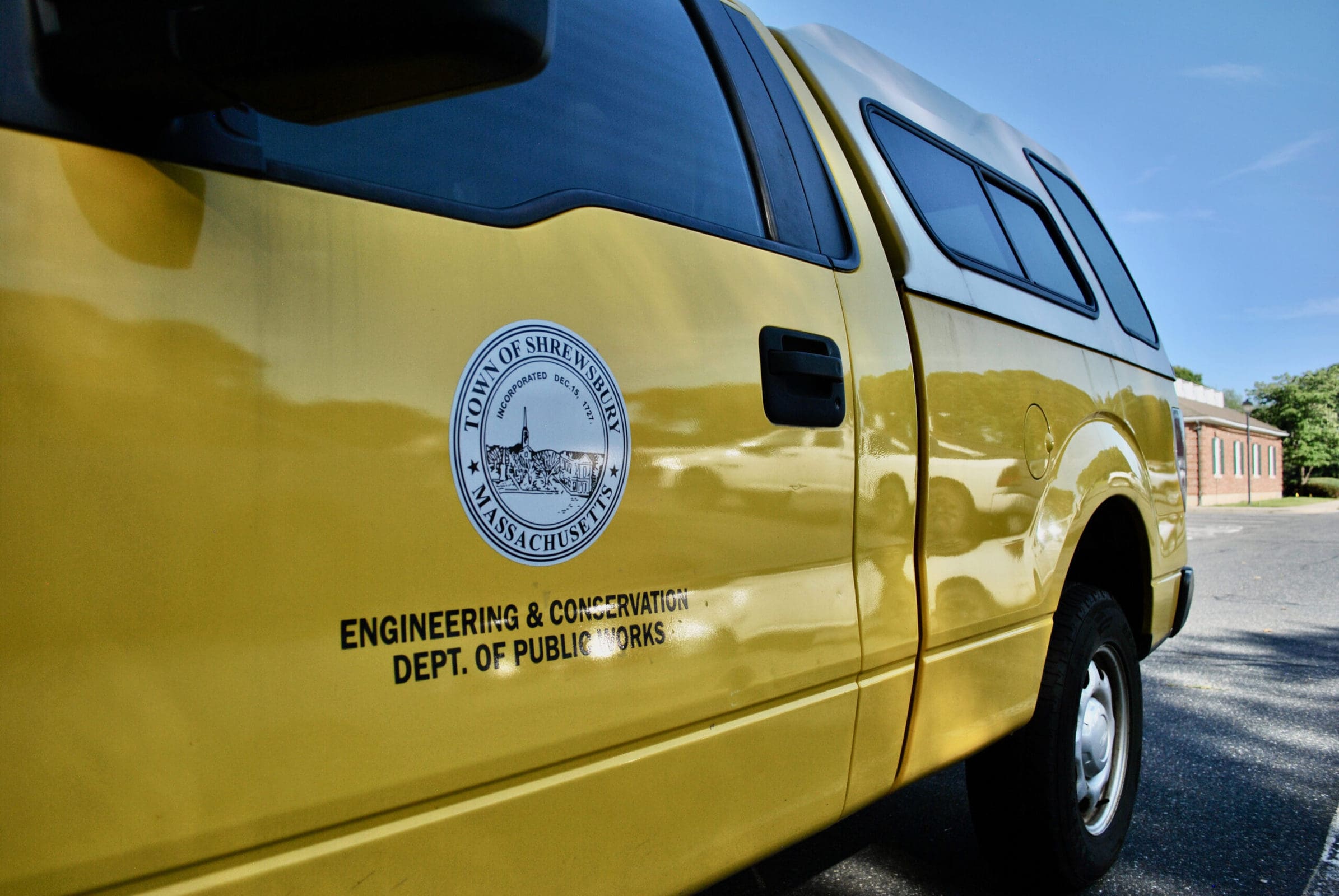
(Photo/SH DPW)
SHREWSBURY – Shrewsbury seeks to invest roughly $10 million into work at the Department of Public Works (DPW) facility at 207 and 211 South St., according to Town Manager Kevin Mizikar’s presentation to the Select Board on March 26.
The plans include the possible demolition of the water and sewer garage (207 South St.) and renovation of the highway garage (211 South St.), Mizikar said. The plan is part of an effort to optimize DPW space, and Mizikar indicated that he hopes to complete the project in the next few years.
“What we’ve done over the last few months is really take a look at the structures, the systems, components of DPW’s operations, and we’ve found a lot of needs that are impacting day-to-day operations of their work,” Mizikar said.
State of the buildings
According to town GIS, the site at 205-211 South Street is 13.75 acres.
The 11,000-square-foot water and sewer garage houses the Water and Sewer Division. The 1950s-era building has become far too small for modern-day operations, officials said, and the existing building is not conducive to expansion or renovation.
The building has failing masonry, water-damaged insulation and limited office space. The facility needs extensive HVAC and roofing work, and the building only has one bathroom and shower.
The building is at the end of its useful life, town officials said.
The 30,700-square-foot highway garage was built in 1976 and houses the Highway Division, Parks and Cemetery Maintenance Division, Fleet Management Division and Public Buildings Division.
The garage is in need of significant repairs, including electrical updates, HVAC replacements, Americans with Disabilities Act-compliant improvements and a roof replacement. The town has outgrown the 50-year-old building, which needs expanded storage space, improved employee facilities and other upgrades that would allow the space to accommodate larger vehicles, officials said.
There are roughly 35 on-site employees between the two buildings, though additional workers often use the facilities during storms or other extended weather events.
DPW’s administrative offices occupy 3,800 square feet at Town Hall and also need additional space to operate effectively.
Whereas DPW administrators are currently split between the South Street facilities and 100 Maple Avenue, the project could combine the groups and potentially free up room in the Town Hall. Town leaders have previously said there was a lack of space at Town Hall.
The project may not be funded completely by taxes, according to Mizikar.
“This would allow us to use rates from the utilities that are raised through user fees to cover the cost of it. That extends into the administrative component… We’re not exactly sure how that plays out, but we think it’s an interesting thing to explore,” he said.
The project may include several items residents have asked for in the past, including a recycling center and permanent yard waste drop-off location.
While both buildings could technically be repaired, that solution would be costly and temporary, officials said.
Select Board officials weighed their options at the meeting.
Chair Beth Casavant said that looking at pictures of the facilities, she wondered whether it would be a better use of taxpayer dollars to repair a building at the end of its life or spend more to build a structure that would suit the town’s needs for the next 50 to 70 years.
“I don’t know how you justify repairing that building. It doesn’t seem possible,” said Casavant.
She noted that although the facility is out of view from the public, it’s just as important as other town buildings.
“It’s not like the library… where every time you walk in there you can see where your tax dollars are going. With something like this, unless you’re going to vote or using the cardboard dumpster, you’re not really spending a lot of time in this part of our town,” Casavant said. “But yet the DPW affects every aspect of residents’ experiences.”
She said she’d still want a Building Committee to ensure the town isn’t overlooking potential reuse opportunities.
The Building Committee would weigh the town’s options, considering short- and long-term goals and making sure the town is taking the best path forward. Similar to the Police Station Building Committee, the process would be months-long and accessible to the public.
Mizikar said that any initial designs of the project would be funded with American Rescue Plan Act dollars.
The Building Committee could be formed as soon as April. Mizikar said that time is of the essence.
“Getting this project up and running sooner rather than later will have a benefit and not spike the tax bill in a future year,” he told the board. “I think this is an opportunity to move forward with a project that’s much needed.”
According to a timeline included in Mizikar’s presentation, the DPW upgrade proposal may appear at Town Meeting in October. From there, the tentative timeline notes that the project design would start in early 2025 with construction beginning in 2028.

















